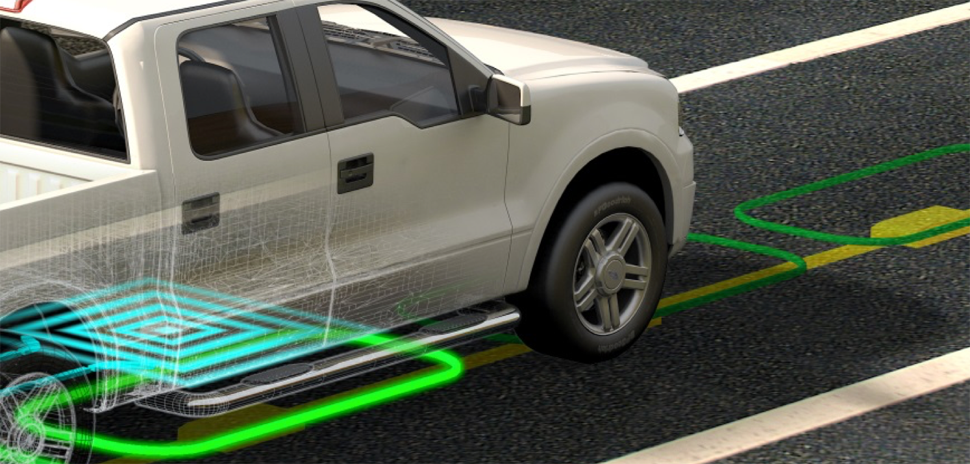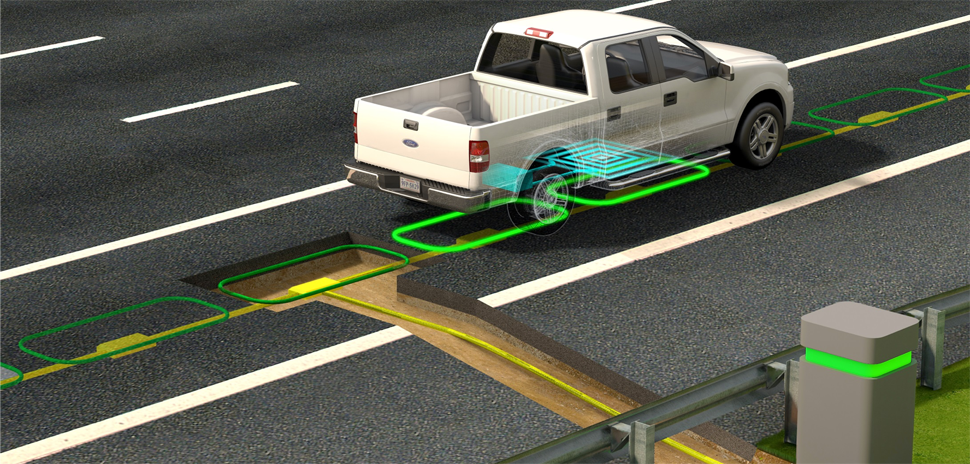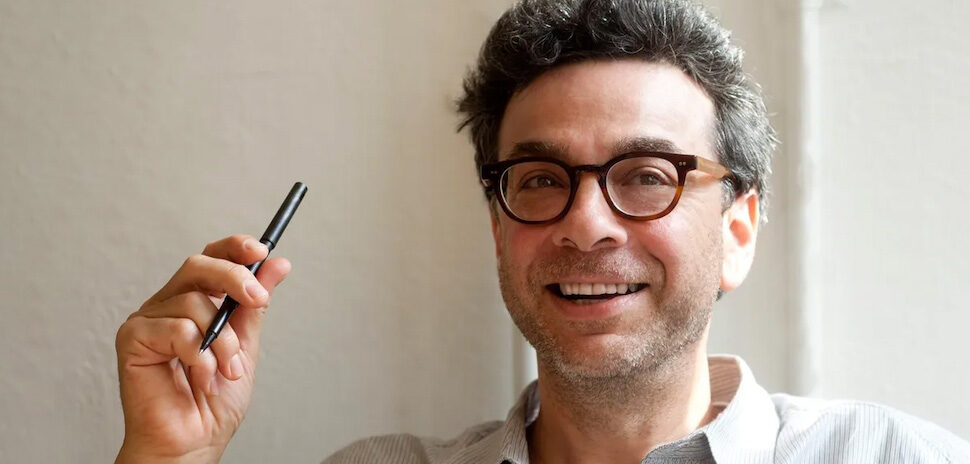![]() One day, Dallas streets will be lit with diodes and loaded with sensors that detect pedestrians and cyclists, allow buses to bypass stoplights, and might even be able to charge electric vehicles as they whisk by.
One day, Dallas streets will be lit with diodes and loaded with sensors that detect pedestrians and cyclists, allow buses to bypass stoplights, and might even be able to charge electric vehicles as they whisk by.
That day might not be too far away for a few Dallas neighborhoods.
Michael Rogers, director of the City of Dallas’ Department of Transportation, said that new technology and design approaches will likely be finding its way to two projects this year.
“It’s just a matter of prioritizing,” he said.
The smart street technology will likely be coming this year.
Rogers’ staff is currently identifying five parts of town where workers will weave smart city technology into street rehab projects. These rehabs — called “complete streets” — make streets narrower, incorporate crosswalks, and often add dedicated lanes for public transit, so it can take priority in traffic. The “smart” aspect could take numerous forms.
One of the more cutting-edge features the city of Dallas is considering is a section of road that would charge electric vehicles as they move. Another under consideration is a dedicated path for autonomous shuttles.
“I don’t know of any ‘shoe-ins,’” for which areas of town will receive the smart city/complete street upgrades, wrote Dallas City council member Lee Kleinman in an email to Dallas Innovates. “But I would like to Montfort [Road] from LBJ to Alpha [Road] be a site. I have committed bond [money] to this, for a complete street, and it is in the Midtown area. The [North Central Texas Council of Governments] is developing a guideway based autonomous people mover for this area.”

Smart Powered Lanes — which are being developed by AECOM — integrate technology into the street that can charge electric vehicles as they pass by. [Image courtesy of AECOM]
Sources at COG say it’s too early to say exactly what sort of technology might be installed, but it could resemble what Jacksonville, Florida, is doing with a new autonomous shuttle in dedicated lanes.
The five prospective sites will be narrowed to two, which will serve two different purposes:
• One will be a “blank slate” that would be located near a current or potential transportation-oriented development. It would potentially use transit to connect people to jobs.
• A second would be located in an established neighborhood with plenty of pedestrian, bicycle, and vehicular traffic
“If you’re walking, the sidewalks are going to be new, if you’re taking a bike, the bike lanes are going to be new, if you’re in an automobile, those lanes are going to be new,” he said.
In the process, the city will install data-driven elements as well, such as traffic-control boxes that sync traffic lights to traffic flow, high-efficiency light-emitting diode streetlights that also will be loaded with sensors. When the city’s putting in new roads, it’s an ideal time to embed things like power strips for charging electric vehicles, as well, Rogers said.
The improvements to city streets and intersections are already budgeted and the cost of incorporating many smart-city features is negligible, Rogers said.
“These projects are going to be under construction, so you might as well do it right,” he said.
ERICSSON CONTRACT CRUCIAL IN DALLAS’ ‘SMART’ MOVE
Rogers didn’t get into specifics of which smart city aspects might be incorporated into these test beds, likely because plans are still coming together. Some cities, such as Barcelona, have incorporated USB chargers and interactive maps at bus stations, so riders can learn the whereabouts of their next ride and its ETA. That city also has embedded sensors in asphalt that inform drivers of open parking spaces.
Fort Worth, meanwhile, is sharing and applying user-generated data from the Waze App, to identify traffic jams, crashes, and potholes.
One crucial factor allowing the city of Dallas to move forward from a smart-city standpoint is an $8.9 million contract with Ericsson, announced in January. In the deal, Ericsson is aggregating and analyzing traffic data, to sync traffic lights in real-time. The system also allows the city to control traffic message signs, school-zone lights, and other traffic devices. Further expediting the city’s move toward data-based traffic management is the implementation of a voter-approved $30 million bond program to install about 1,500 advanced traffic control boxes and sensors that can measure traffic density.
“We see that as a major step forward as a way it’s managing its traffic signal system, and sharing with the larger traffic systems.”
Thomas Bamonte
Similar boxes and sensors are being installed at intersections in cities such as Richardson, Fort Worth, and Irving. Audi, Total Traffic Solutions, and the city of Frisco worked together to implement a smart traffic solution that informs drivers of late-model Audis how long they’ll need to wait for stoplights to turn green. Since the program launched in Frisco in 2017, the town of Flower Mound and cities of Grapevine and Arlington have signed on to take part in similar arrangements.
“We contributed financially to help Dallas obtain the Ericsson platform,” said NCTCOG senior program manager Thomas Bamonte, who is overseeing efforts to improve traffic flow in North Texas. “We see that as a major step forward as a way it’s managing its traffic signal system, and sharing with the larger traffic systems.”
Bamonte said the Council of Governments is seeking a Federal Highway Administration grant that would allow Dallas’ Ericsson system to analyze traffic data across several cities, to ease traffic flow region-wide.
“One component for our grant application is to have the Dallas system be the traffic signal data hub, for the 10 largest municipalities in the region,” Bamonte said, adding that he’s encouraged to hear that Dallas has announced its intention to build its two complete street/smart city testbeds.

[Image courtesy of AECOM]
PULLING IT TOGETHER
Rogers said the city is inviting companies with smart city tech to take part in this initiative.
“We’re setting … the foundation for all of this, where we can have all of this smart technology, and the smartest processes possible to move people [and] to move goods, and do it an efficient, effective way,” said Rogers. “So, not only will the autonomous vehicles be something that can be integrated into this for public transportation standpoint, as well when you look at what we were we going to do as we move forward with, for example, a D-Link.”
Dallas Area Rapid Transit is in the process of converting its seven-vehicle downtown-Dallas-based D-Link fleet to electric propulsion. According to Rogers, it’s a small step from electric vehicles to autonomous vehicles, self-driving people movers, and other technologies. Among them are the previously mentioned streets with charging capacity built-in for electric vehicles — called Smart Powered Lanes — which are being developed by AECOM. That company is currently working with the city of Dallas as well.
“We welcome those companies that are looking at and trying to develop this type of technology,” Rogers said.
Get on the list.
Dallas Innovates, every day.
Sign up here to get what’s new and next in Dallas-Fort Worth.
































